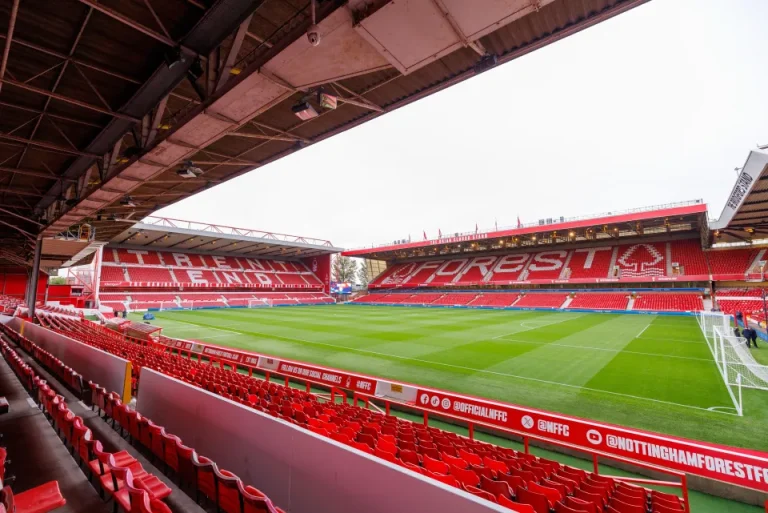In a bold and ambitious move, club owner Evangelos Marinakis has officially announced a major stadium expansion project at the club’s historic home, the City Ground in West Bridgford, Nottinghamshire, with the stated aim of increasing the stadium’s capacity from approximately 30,455 seats to a target of 50,000.
Here are the key details of the announcement, what it means for the club and local community, and how the project is expected to unfold.
The Announcement & Scope
Mr Marinakis confirmed that the club has engaged the renowned architecture and design firm KSS Group (which has worked on high-profile stadium expansions such as Anfield) to draw up the master-plan for the redevelopment of the City Ground.
The new design work proposes a complete overhaul of one of the ground’s key stands — the Peter Taylor Stand — expanding its capacity dramatically and infilling the corners of the Trent End. Under one of the more ambitious schemes, the stand’s seating could rise from around 5,000 to approximately 15,000.
While earlier phases of the plan cited a target of 43,000-45,000 seats, the club has now spoken in terms of “up to 50,000”.
The development will also include other infrastructure upgrades, improved hospitality areas, and enhanced fan-experience amenities. The overall ambition is to future-proof the club’s stadium for years to come.
Why This Matters for Nottingham Forest
1. Capacity & Growth – The expansion will allow Nottingham Forest to accommodate a significantly larger fanbase each match. Moving towards a 50,000-seat stadium places the club among the larger venues in English football, which supports both sporting ambitions and commercial growth.
2. Club Ambition – Under Marinakis, Forest have signalled lofty goals both on and off the pitch. A stadium of this size reflects an expectation of sustained high-level performance, potential European competition, and increased revenue streams.
3. Community & Legacy – The City Ground has been home to Forest since 1898. Retaining and upgrading the existing site (rather than moving location) demonstrates commitment to preserving the club’s heritage and its connection to the local community and city centre.
4. Commercial Opportunity – More seats mean more match-day revenue, more hospitality opportunities, and more capacity to host non-match events. Designing a modern stadium can also attract corporate partners and improve global profile.Timeline & Planning
According to up-to-date reports, the club is moving from initial planning to more detailed design work. Rushcliffe Borough Council has already granted the green light for the first phase of development.
KSS is working on the finalised plans in partnership with the club and with architect Konstantinos Chatzimanolis (appointed by Marinakis earlier this year) as part of the project team.
Construction is envisaged to begin in phases — initial works may start while the club continues to play at the ground, with phased completions to minimise disruption. Exact dates for breaking ground, expected completion of each phase, and full delivery to 50,000 seats are yet to be publicly confirmed.
Challenges & Considerations
Planning & Approval — While permission has been granted for initial phases, moving to full 50,000 capacity will require further detailed submissions and likely significant coordination with planning authorities.
Logistics & Construction Disruption — Upgrading a live football stadium poses challenges around safety, scheduling (avoiding interference with matchdays), and managing fan experience during construction.
Financial Commitment — Such a large expansion entails very substantial investment. The club will need to ensure that budget, revenue projections, and construction timelines are robust.
Legacy & Heritage — Balancing modernisation with preserving the character and legacy of the City Ground will be key to maintaining fan goodwill.
Location Constraints — The City Ground site is closely located to the River Trent and within an established urban area; these geographic constraints may impact design, access, and future expansion options.
Sporting Performance Correlation — There is always a risk that stadium investment doesn’t translate to on-pitch success; supporters will watch closely that ambition matches delivery.


